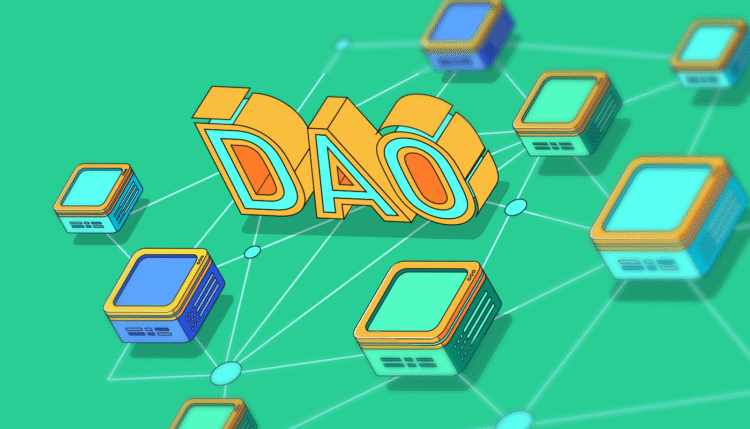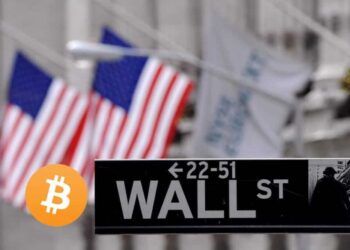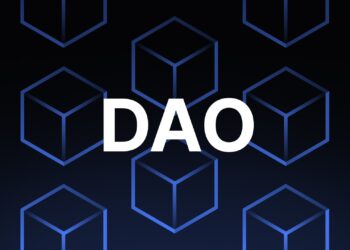In 2025, DAOs control over $32 billion in on-chain treasuries, with top-tier DAOs controlling over a billion each—an unprecedented capital base for a new financial specie. But these reserves aren’t longer idle bags of governance tokens and ETH. DAOs are evolving into active portfolio managers, reallocating capital into stablecoins, real-world assets (RWAs), and on-chain yield strategies.
They’re also forging financial alliances with one another, weaving a growing mesh of cross-DAO ownership and strategic alignment—less like grant-giving committees and more like sovereign wealth funds for the Internet economy.

From Token HODLers to Strategic Allocators
The landscape is shifting: DAO treasuries are maturing from passive token reserves into actively managed portfolios. They’re shifting risk away from volatile governance assets toward stable, yield-bearing positions. Think stablecoins, tokenized Treasuries, private credit, and even DAO-to-DAO equity stakes. It’s a strategic pivot toward institutional-grade capital management—designed to make DAOs more resilient, autonomous, and future-proof. To understand this evolution in practice, let’s examine how some of the ecosystem’s leading DAOs are already rethinking their treasury strategies.
Real-World Assets and Stablecoins: Anchors in Volatile Seas
Leading the diversification charge is Arbitrum, which expanded its Stable Treasury Endowment Program (STEP 2.0) in early 2025. Working with Karpatkey, Arbitrum converted a portion of its treasury into stablecoins and deployed them across lending protocols and RWA vaults to earn on-chain yield. The DAO cited the goal of ensuring “greater financial stability for the ecosystem,” which sharply contrasts the speculative ethos of early crypto treasuries.

Arbitrum has emerged as a flagship example of the evolution of DAO treasury. In early 2025, it expanded its Stable Treasury Endowment Program (STEP 2.0), partnering with Karpatkey to reallocate treasury assets into stablecoins and deploy them across lending protocols and RWA vaults to generate on-chain yield. The stated goal? “Greater financial stability for the ecosystem”—a far cry from the token-maxi mindset that once defined DAO treasuries.
Similarly, MakerDAO continues to dominate the RWA narrative. By 2025, it has deployed hundreds of millions into U.S. Treasuries, private credit, and tokenized real estate through entities like Monetalis and BlockTower. With the goal of backing 100B DAI through diversified, income-producing assets, Maker is redefining what it means to be a crypto-native central bank.

The Ethereum Name Service (ENS) DAO recently voted to swap 6,000 ETH for $20 million USDC using a time-weighted average price (TWAP) sale to minimize slippage. The decision accompanied an expansion of its endowment fund, aiming to cover core operating costs through yield rather than ongoing token sales. One contributor described the approach as similar to a “Web3 university endowment”—stable, long-term, and mission-aligned.
Cross-DAO Treasury Swaps: Aligning Incentives and Risk
In February 2025, Balancer DAO and CoW DAO completed a $500,000 token swap, each agreeing to hold the other’s governance token for at least two years. This wasn’t a liquidity play—it was a strategic alignment tied to the CoWAMM initiative, a new DEX design built collaboratively by both teams. Governance rights were scoped in advance to avoid power grabs while enabling mutual representation. Think of it as a DAO-native version of a stock swap without the lawyers and corporate red tape.
Other DAOs are paying attention. Treasury professionals at Karpatkey have noted that “token swaps are emerging as a way to formalize collaboration. They’re not just financial transactions—they’re declarations of alignment.” The message is clear: DAO treasuries are evolving into tools of diplomacy, not just capital reserves.
DAOs as Proto Hedge Funds: Active, Delegated, and Data-Driven
Managing a diversified treasury takes more than vibes. DAOs are increasingly bringing in professional asset managers like Karpatkey, Llama, and Steakhouse Financial—or forming internal committees like Arbitrum’s Treasury Management Committee (TMC). These groups are empowered to rebalance portfolios, choose yield strategies, and vet counterparties, all within governance-approved mandates.
Arbitrum’s TMC, for instance, was tasked with identifying stablecoin managers and liquidity options, combining community input with institutional-grade execution. MakerDAO, meanwhile, runs a Strategic Finance core unit to oversee its complex RWA positions. Day-to-day execution typically flows through Gnosis Safe multisigs, while key thresholds are decided via Snapshot and on-chain votes.
This model echoes the structure of endowments and sovereign wealth funds, where trustees and execution approve broad mandates is left to professionals. However, for DAOs, it introduces a familiar tradeoff: the more authority is delegated, the more distance grows between governance and the governed. Token holders are now forced to weigh financial sophistication against the core value of decentralization.
The ROI of Treasury Sophistication
Are these diversification strategies paying off? Early signs point to yes. MakerDAO reportedly earns millions in quarterly revenue from its U.S. Treasury bond holdings alone. ENS expects its endowment to cover a significant share of operational costs, easing the need to liquidate ETH. Arbitrum’s STEP 1 results laid the groundwork for STEP 2—signaling clear community support.
As treasuries mature, DAOs are eyeing the next frontier: lending stablecoins to aligned protocols, backing early-stage projects, or tapping into tokenized TradFi assets like equities and real estate. They’re evolving into on-chain financial institutions with diversified portfolios, structured mandates, and macro risk frameworks.
Financial Complexity Is a Governance Risk
The contours of a new DAO economy are taking shape—a growing web of token swaps, on-chain yield strategies, and capital alignment across protocols. Part crypto-native, part institutional, this shift marks the emergence of DAOs as active financial entities. But with greater sophistication comes greater responsibility—and new risks.
Poorly managed exposure to RWAs, unstable collateral like depegging stablecoins, or misaligned treasury swaps can destabilize entire ecosystems. More importantly, financial complexity often leads to governance opacity. As one contributor on the Maker Forum put it, “If token holders can’t understand the financials, how can they govern them?”
Conclusion
DAO treasuries in 2025 are coming of age. From Arbitrum’s yield-seeking STEP to Maker’s RWA strategy and Balancer’s token diplomacy with CoW DAO, we’re seeing a shift from passive reserves to active, strategically managed capital. With professional managers, stablecoin buffers, and cross-DAO coordination, DAOs are shaping not just their own future but the architecture of Web3 finance.
Yet, as treasury strategy advances, the supporting infrastructure still trails behind. Governance tooling, reporting, and incentive systems must evolve to keep pace. Meanwhile, DeFi AI is gaining momentum, with early asset management tools already emerging—and DAOs may prove to be the natural coordination layer between on-chain humans and AI agents.
Looking ahead, DAO treasuries may soon resemble on-chain hedge funds or sovereign wealth DAOs. The line between protocol governance and capital allocation is blurring—and the outcomes of these early experiments may define the next decade of decentralized finance. As DAOs become stewards of real-world capital, the big question isn’t just how they invest—but who decides. Will decentralized governance keep pace with institutional sophistication—or be left behind?
Author: Roman Melnyk, the chief marketing officer at DeXe.io.
Disclaimer
This is a press release. The information provided in this article is for informational purposes only and does not constitute financial advice. DeFi Planet does not endorse or recommend any specific investment decisions and reminds readers to conduct their own research and due diligence before taking any financial actions. DeFi Planet is not responsible, directly or indirectly, for any damage or loss caused or alleged to be caused by or in connection with the use of or reliance on any content, goods or services mentioned in the press release.
If you want to read more articles like this, visit DeFi Planet and follow us on Twitter, LinkedIn, Facebook, Instagram, and CoinMarketCap Community.
“Take control of your crypto portfolio with MARKETS PRO, DeFi Planet’s suite of analytics tools.”





















